What is a Capacitor
It is a device used to store charge in an electrical circuit
An every day use
To remove sparking in the ignition system of an automobile. When an electric current is switched on or off there is an induced current which can create sparking. If we put a capacitor in the circuit this current charges the capacitor instead and this will avoid occurrence of sparking.
Charge is proportional to potential
When a charge is given to a conductor its potential rises. If we give a conductor a charge Q then its potential rises. The greater the charge the greater the potential. So they are proprotional to each other and may be exepressed as
Q ∝ V
Which means that charge Q is directly proportional to potential V or that the potential is directly proportional to the charge given to a conductor
We can re-write this as the following equation
Q = C V
Here C is the capacitance of the conductor
Factors determining Capacitance
1. Shape and size of the conductor
2. The surrounding medium
3. Presence of other conductors
We can re-write the equation as:
C=Q/V
Where C is the charge stored per unit potential rise in the conductor
SI unit for Capacitance
This is Farad
1 Farad = 1 Coulomb/Volt
or
1 F = 1 C/V
However, Farad is a very large unit so we use smaller units like
μF
which is10 -6 F
Capacitance of an Isolated Spherical Conductor
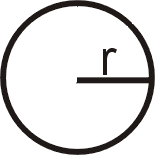
Consider the capacitance of an isolated spherical conductor. Say we have as sphere of radius r and say charge Q is given to the conductor.
We can write that potential
V=Q/4π Ε0 r
We know that
C=Q/V
or
Q/V=4π Ε0 r
thus the capacitance of a spherical conductor is
C=4π Ε0 r
This expression shows that capacitance C is directly propotionl to the radius r of the spherical conductor
The larger the radius the greater is the capacitance of the spherical conductor
Principle of a Capacitor
Say we have a large plate and we give a positive charge to it
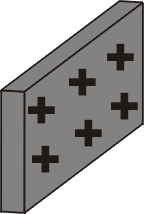
There is a limit to the amount of charge that can be given to the plate because as charge is given its potential rises and beyond a certain limit the charges start leaking.
If we get another plate and place it next to this positively charged plate then negative charge will pulled towards the side of this plate which is closer to the positvely charged plate and positive charge on the further side.
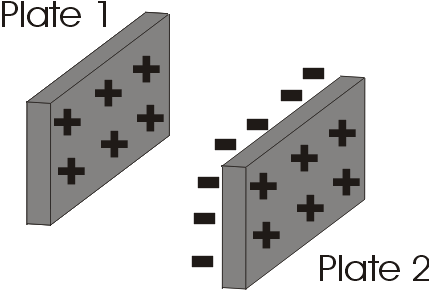
This negative charge on plate 2 will reduce the potential on plate 1. At the same time the positive charge on plate 2 will try to increaser the potential of plate 1. However the effect of the closer side of plate 2 holding negative charge will be more. This leads to reduction in the potential of plate 1. So now more charge can be given to plate 1
Now if we earth the outer side of the second plate. Then the positive charge on this side will go to Earth.With this plate 1 will be able to hold even more positive charge.
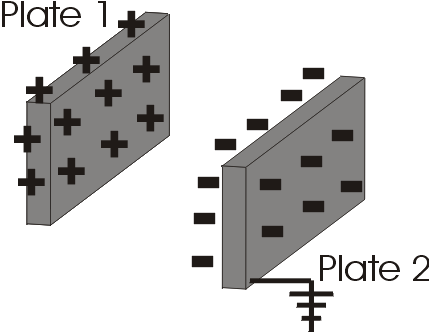
This is the principle of a capacitor
A typical capacitor which is a parallel plate capacitor is made up of two parallel plates which are separated by a distance d. A is the area of cross section of these plates and if +Q charge is given to one plate there will be -Q charge on the other plate.
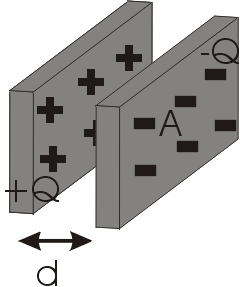
How do we charge this kind of a capacitor? Let us see an electrical circuit. A capacitor C is indicated as two parallel lines. The circuit also has a battery V and a switch K. When the key is switched on, electrons from the first plate start moving towards the positive end of the battery. This means that current is flowing from the positive end of he battery to its negative end.
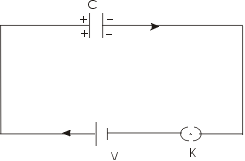
Thus the positive end of the battery will extract electrons from one plate and deposit them on the other plate. As a result one plate will acquire positive charge and the other plate will acquire negative charge. This process is going to continue till the time the capacitor also acquires a potential V which is exactly equal to the potential of the battery. Then the current will stop. Now the capacitor has charge stored on it and the potential difference across the plates is exactly equal to the potential difference on the battery. Or charge stored can be written as